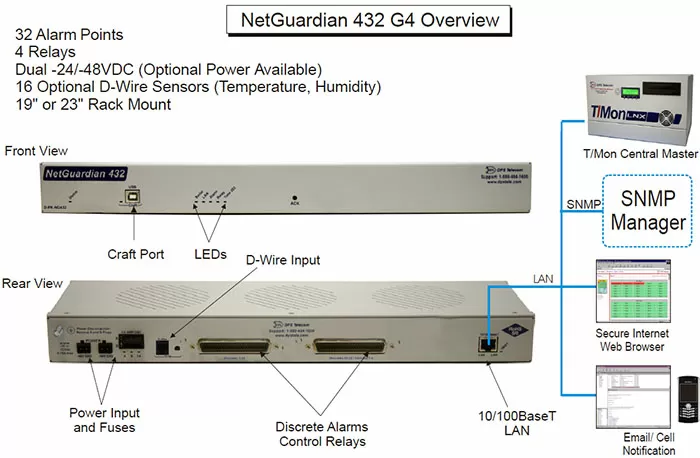Check out our White Paper Series!
A complete library of helpful advice and survival guides for every aspect of system monitoring and control.
1-800-693-0351
Have a specific question? Ask our team of expert engineers and get a specific answer!
Sign up for the next DPS Factory Training!

Whether you're new to our equipment or you've used it for years, DPS factory training is the best way to get more from your monitoring.
Reserve Your Seat TodayAny remote site with important equipment demands good monitoring. Consider the important role of your operation, and all of the people it serves.
Now imagine everything that can go wrong:
For all of these reasons, you must have remote monitoring of some kind in place. When bad things happen, you need to know about it immediately.
Unfortunately, not all monitoring is created equal. You have do your homework and make the right choice.
Fortunately, I can help you with that. Let's get started!

Everyone likes a shortcut, but sometimes it comes back to bite you.
That's certainly true in remote monitoring when it comes to equipment with "integrated" alarm monitoring.
The idea is good. Someone manufactures a piece of equipment, and they build a monitoring suite into it for you. It may send alarms to a proprietary piece of software, and it might seem to work pretty well.
Later on, you'll likely discover the problems with integrated monitoring functions:
Yes, it's possible to find a device with integrated monitoring that is actually quite good. Sadly, this tends to be the exception rather than the rule.
So, how do you increase your odds of establishing a world-class monitoring setup at your company?
In contrast to integrated monitoring, you can choose to install a physical alarm collector that is a general-purpose remote. That is, it's not produced by or aligned with any other manufacturer. It's built by a dedicated team to be the best possible monitoring device you can buy.
Advantages of a general-purpose remote for alarm collection:

(Obviously, I have a bias toward DPS remotes. They're awesome. However, since you should always do your own due diligence before making any purchase, please feel free to review this list of other RTU manufacturers who make general-purpose alarm remotes.)
At DPS, we make physical alarm collectors that aren't influenced by companies manufacturing other equipment. Remote alarm monitoring is all we do.
Unlike some competitors who use intentional incompatibility and planned obsolescence to force your future purchasing, we view our role as helping you escape the trap of incompatibility.
You can purchase both RTUs and master stations from DPS, but you can also choose just one or the other. We use standard protocols like SNMP that are supported by thousands of device manufacturers worldwide.
You can also use DPS to free you from legacy troubles, incompatibilities, and discontinued equipment. Many of my articles are about specific examples of this, including the development of the specialized Audio Distribution Panel and monitoring upgraded Digitize PrismLX units.
To get you started on your project, consider several common DPS alarm remotes you can use to monitor your facilities:
If you're really busy, you can't afford to spend hours and hours doing web research. If you're anything like me, you know that a few minutes with an expert are vital to get your bearings.
Fortunately, on this topic, that expert is me (or my colleagues at DPS who might also answer your call). Just give me a call to go over your project (559-454-1600). I can walk you through specific examples from my past projects and explain the basic concepts.
At that point (and perhaps armed with one of my info-packed proposals), you can more easily ingest information from websites and speak with vendors.
Give me a call: 559-454-1600
You can also email me: sales@dpstele.com
I look forward to working with you to create top-notch visibility at all of your remote sites.

Andrew Erickson
Andrew Erickson is an Application Engineer at DPS Telecom, a manufacturer of semi-custom remote alarm monitoring systems based in Fresno, California. Andrew brings more than 19 years of experience building site monitoring solutions, developing intuitive user interfaces and documentation, and opt...